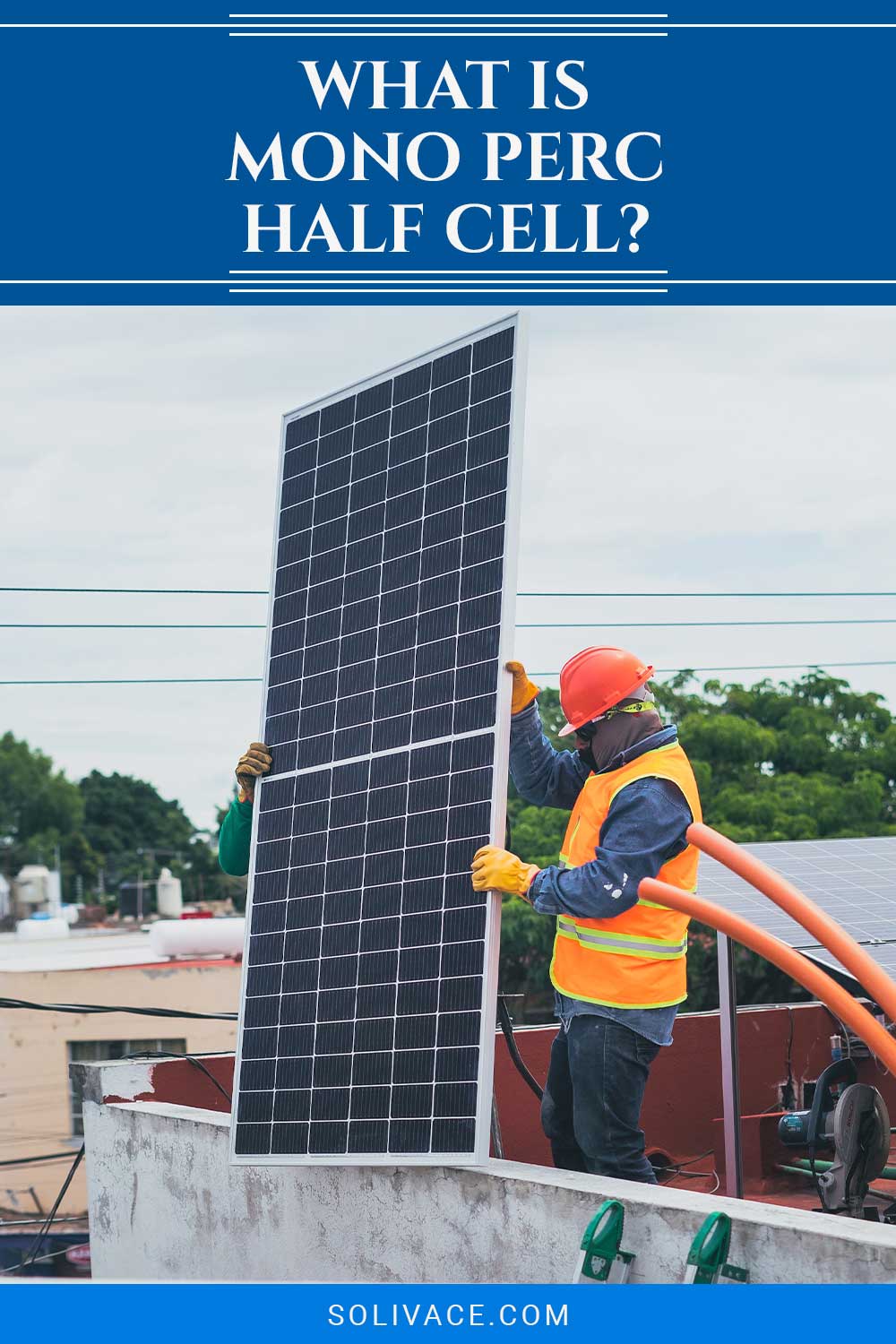What Is Mono Perc Half Cell?
We may earn commissions for purchases made through links on our site. Learn more on our about us page.
Mono PERC Half-cut Cell solar panel is a lot of technical jargon combined into one monstrosity of a term. Thankfully, separating each one becomes easier to understand, and their benefits can be fully understood when put back together.
“Mono” simply refers to the monocrystalline cells of a solar panel – it means there is a single crystal, typically silicon, that is acting as the semiconductor for the photovoltaics rather than multiple crystals (polycrystalline).
PERC stands for Passivated Emitter and Rear Cell or Passive Emitter and Rear Contact technology. Finally, half-cut cells are basically a single photovoltaic cell of a solar panel cut in half. Read on to learn more about these solar technologies housed in your solar panels.

What is a Half-Cut Cell?
If you weren’t aware, solar panels are divided into multiple rectangle-shaped areas referred to as photovoltaic cells (PV cells). Solar panels are typically divided into either 60 or 72 cells when they are full-size.
Half-cut cell technology involves cutting each of these PV cells in half, effectively doubling the number of PV cells in a solar panel (known as half-cut cells). This means a 60 and 72-cell panel would have 120 and 144 half-cut cells, respectively.
By cutting the PV cells in half, there are several benefits to be had by solar consumers.
How Does it Work?
It may seem somewhat counterintuitive to have half-sized cells in a solar panel, but they actually increase the efficiency of solar panels.
The main way they do this is by having lower electric current production in half-cut cells – half the current, to be exact. This results in lower power losses due to resistance in the wiring and electronics.
They also have greater shade tolerance. A single PV cell in the shade can negatively affect the performance of a whole solar panel, but by using half-cut cells, fewer half-cut cells may be in the shade.
What is the Difference Between Mono PERC and Half-Cut?
A mono PERC solar panel employs monocrystalline structures in its solar panels, while half-cut cells may use monocrystalline or polycrystalline silicon semiconductors. However, the big differences are:
- Mono PERC cells may be full-sized PV cells as opposed to smaller half-cut cells.
- Mono PERC solar panels have a secondary layer underneath the primary layer of semiconductors to absorb reflected light waves, while half-cut cells may not.
It’s also likely that mono PERC PV cells’ wiring is slightly different from half-cut cells. This would be so that half-cut cell solar panels can take full advantage of the smaller cells, especially when in the shade.
What is the Benefit of Half-Cut Cell Solar Panels?
We’ve already touched on the main benefit of half-cut cell solar panels: less resistive losses of power generated. However, this is not the only benefit you can reap from half-cut solar panels.
Because of their smaller size, half-cut cells are more durable than traditional PV cells. As a result, they are more likely to resist the mechanical and physical stresses of transportation, installation, and even if things were to fall on them after installation.
Half-cut cells are also divided and wired up slightly differently than regular PV cells so that if some of the panel is covered by shade, the performance of the whole panel isn’t significantly lowered.
What are its Flaws?
Half-cut cell technology sounds like a great step forward for solar technology, and it is, but there are a few flaws to be aware of. An issue that all solar panels face is becoming overheated.
Because solar panels sit in the hot sun and there can be hot ambient air temperatures, hot spots on the panels can lower the efficiency because the heat increases the resistance in all the wiring. If it gets hot enough, serious damage could occur to the panel itself.
All of this is still true for half-cut cell solar panels, and it is unclear whether the smaller cells would dissipate and distribute heat better or worse than traditional solar panels.
Because of the way half-cut cells and solar panels are wired, they also involve split junction boxes, which are not a great solution, according to some electricians.
Final Thoughts on What Is Mono Perc Half Cell
A mono PERC half-cut cell solar panel combines the worlds of three different solar technologies into a single solar panel (if that is possible). Each technology works to increase the efficiency of solar panels in different ways and to varying degrees of success.
Generally, half-cut cell solar panels are considered superior to traditional PV cells thanks to their higher percentage efficiencies, but there are a few downsides to consider.
However, it seems that the future of solar panels is half-cut cells, which might save you some roof space for your house.



Leave a Reply
You must be logged in to post a comment.